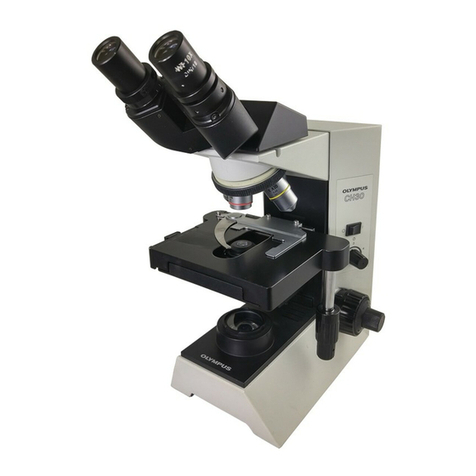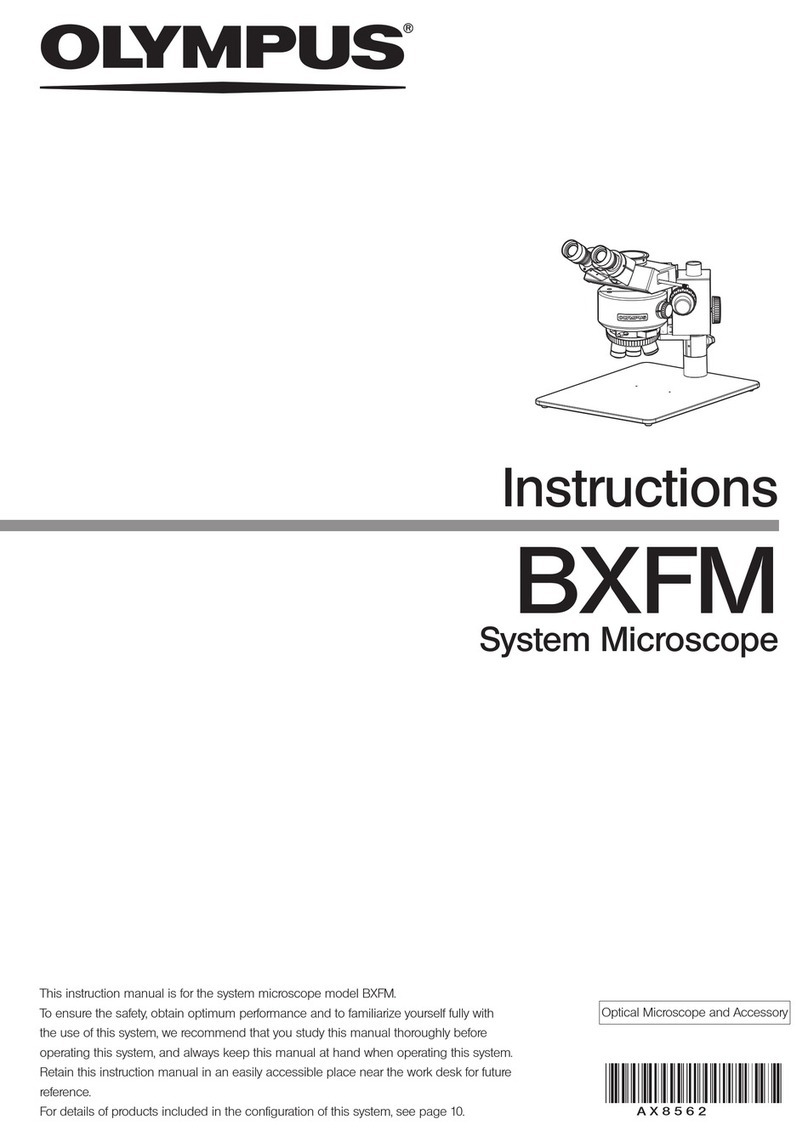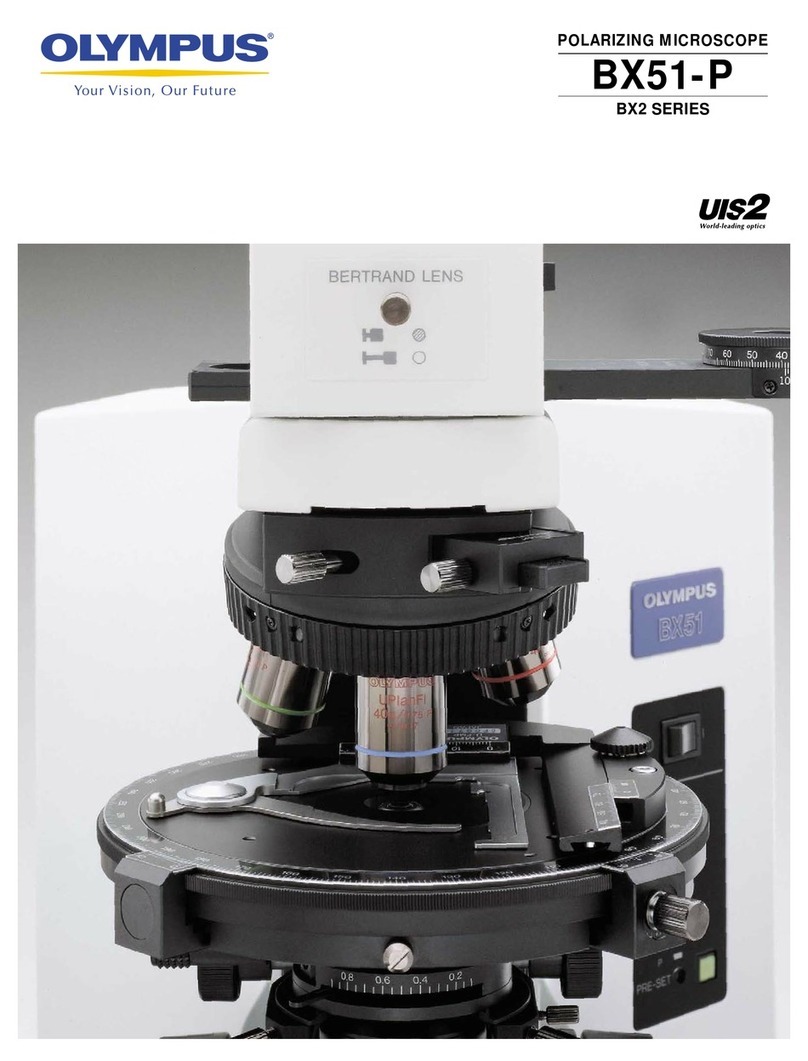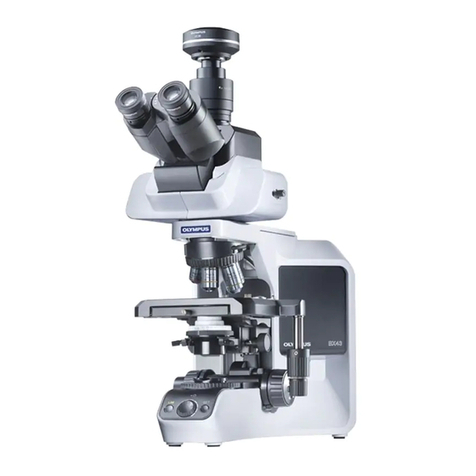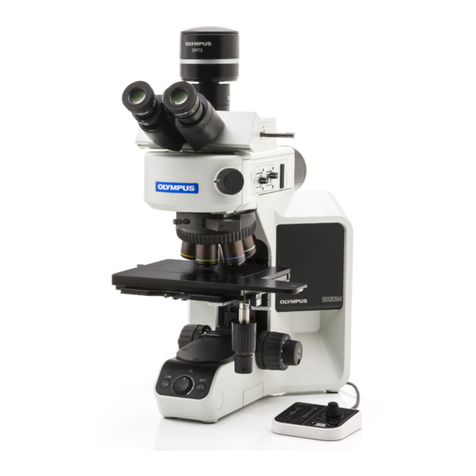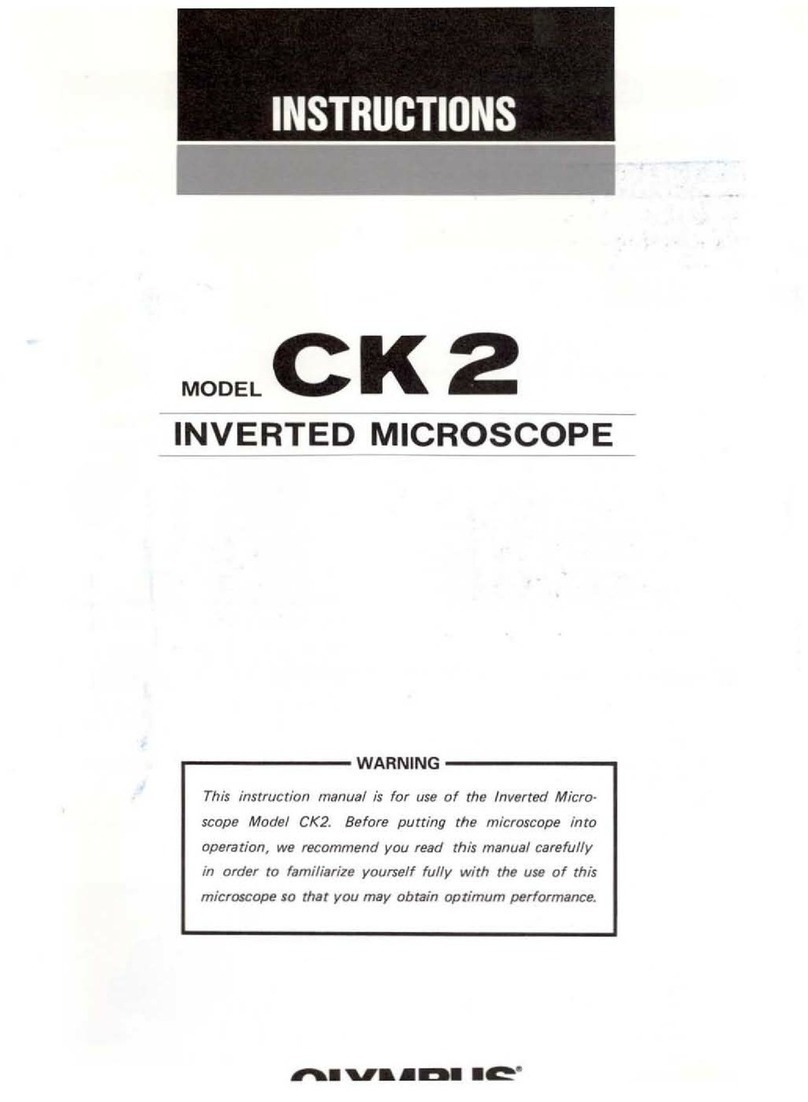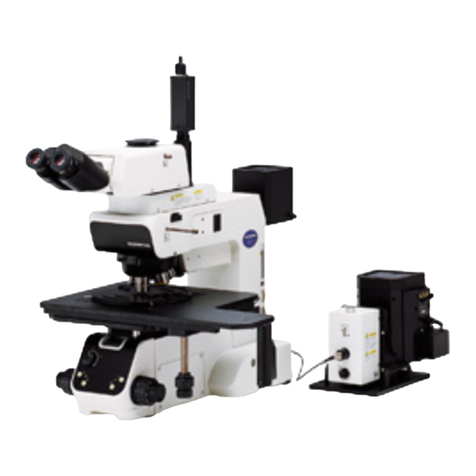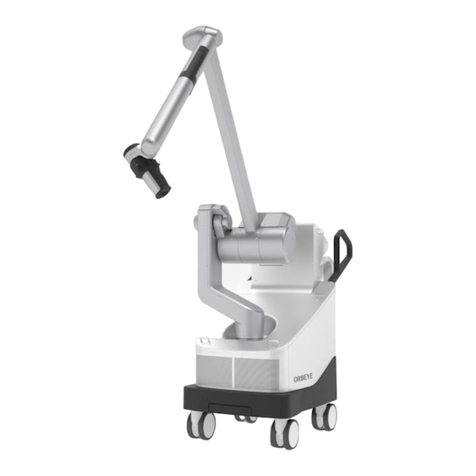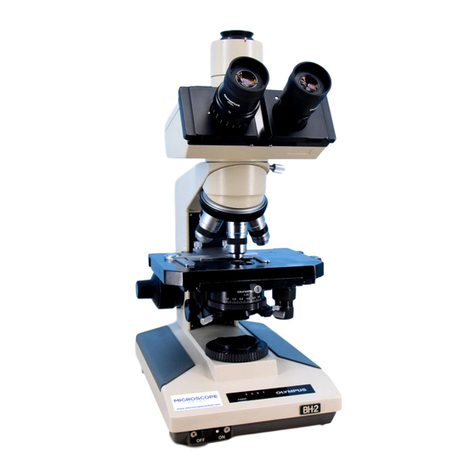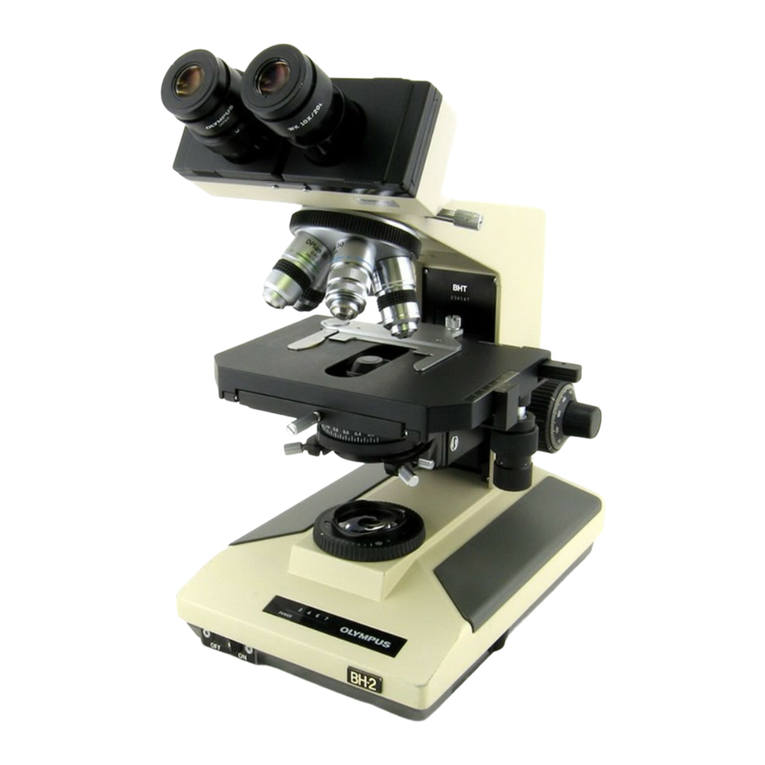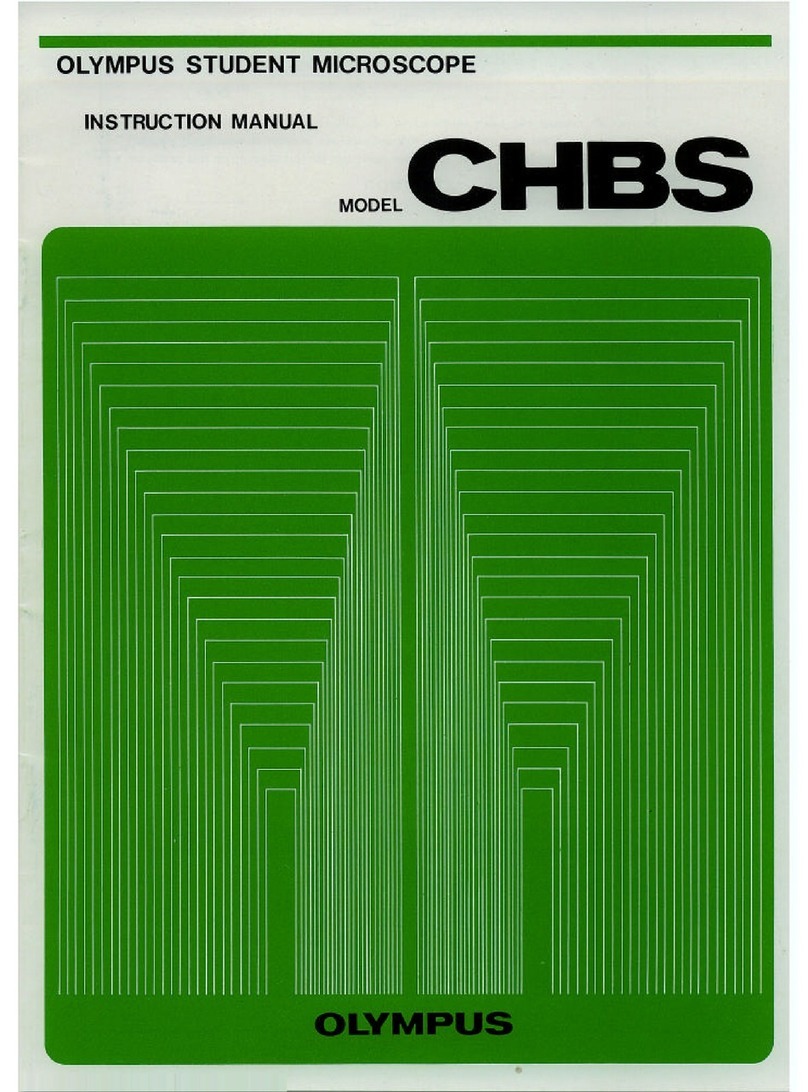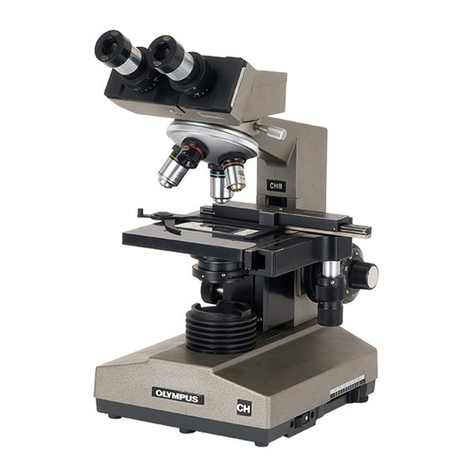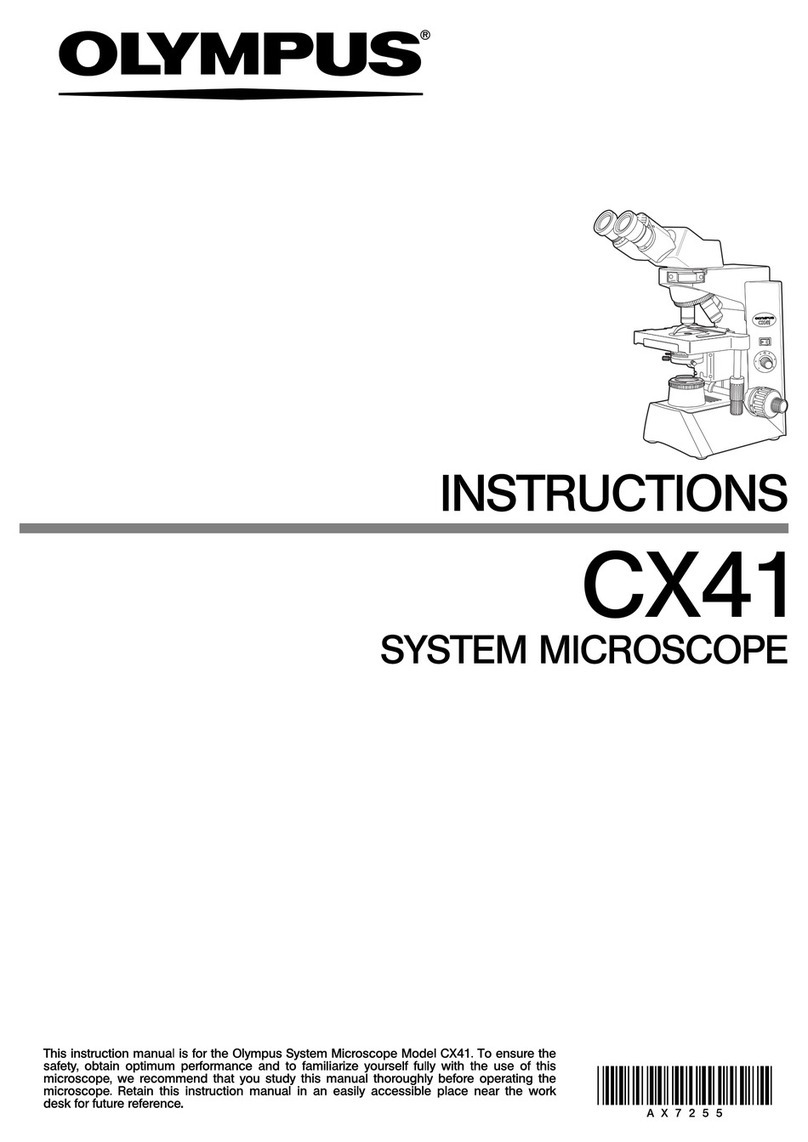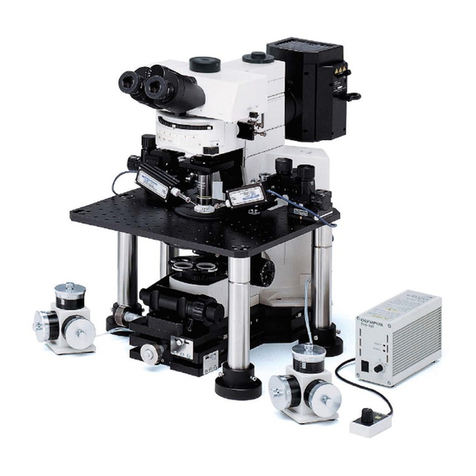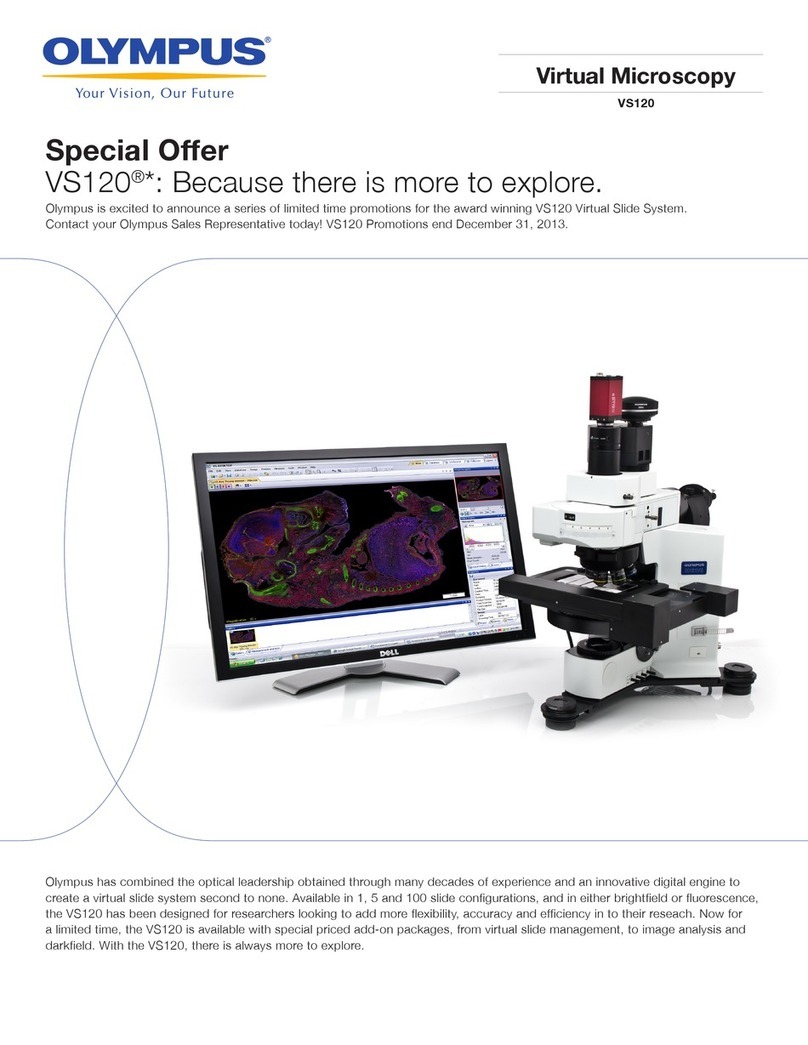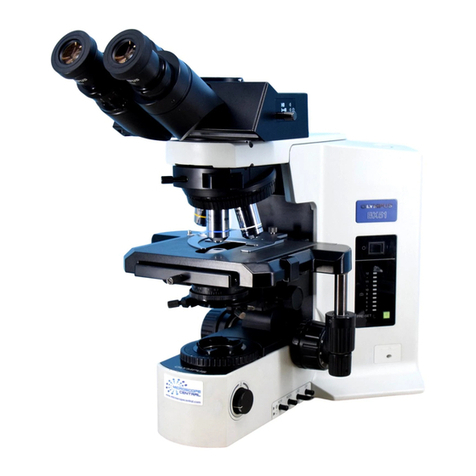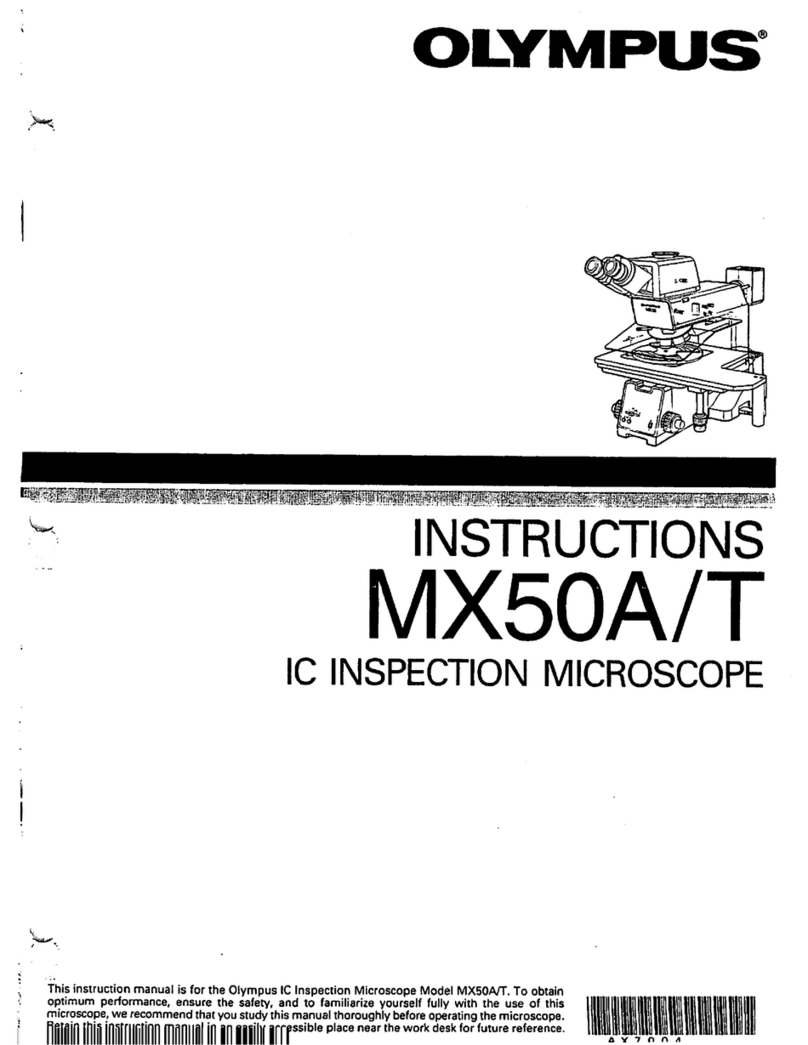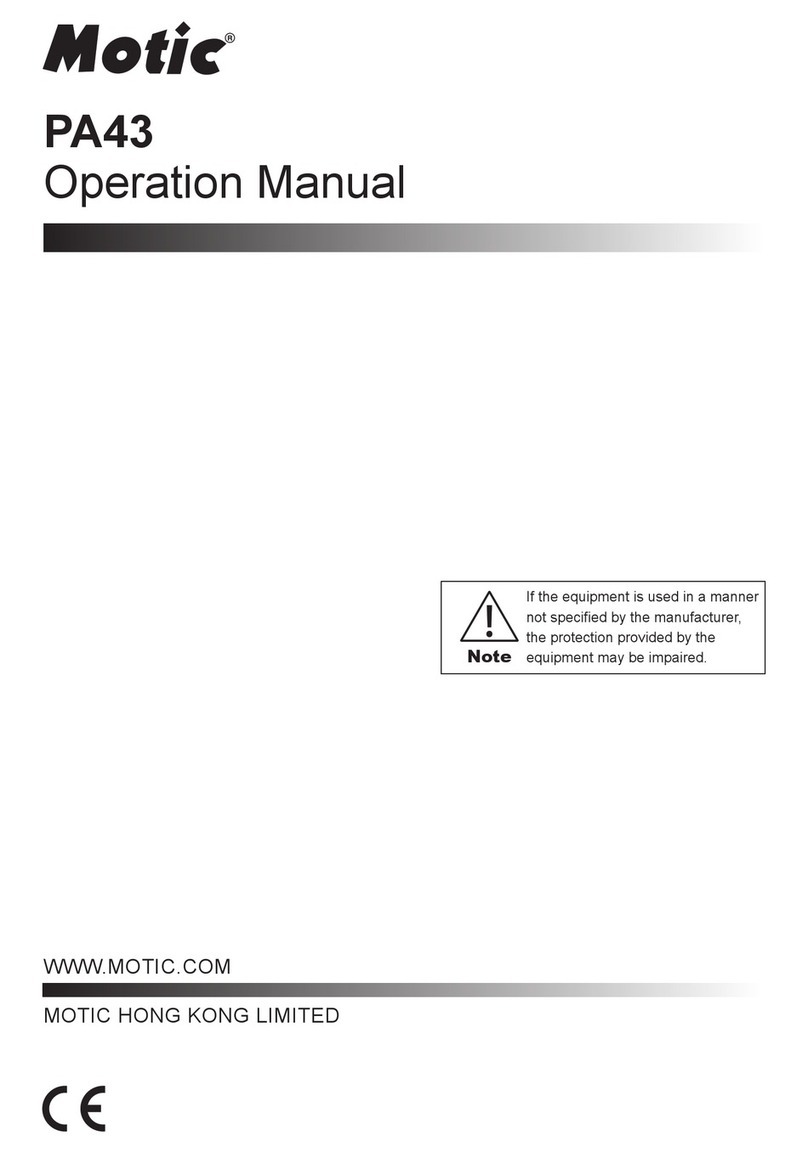
3
CX23
1. Handle the microscope with care when you carry it, and avoid
subjecting it to severe impact or dirt.
2. Do not use the microscope where it is subjected to direct sunlight,
high temperature and humidity, dust or vibrations. (For the conditions of
operating environments, see “7 Specifications” (p.18))
3. Make sure to adjust the rotation tension of the coarse adjustment
knob with the tension adjustment ring. Please refer to page 9 for the
adjustment method.
4. When installing the microscope, be sure to leave enough space
around the AC adapter if the AC adapter is not stored in the
microscope.
5. When carrying this microscope, remove the AC adapter or store the
AC adapter and the power cords into the microscope. Then, hold
both sides of the arm hole as shown in the picture on the left and
carry the microscope carefully. It is easier to hold the arm hole by
putting the ball of your fingers at the finger contact area c shown in
the picture on the left. For procedures to store the AC adapter and the
power cords, refer to “9 Assembly” (p.20).
·Do not hold the stage a or observation tube b , since they
may be damaged. Also, when you carry the microscope,
remove specimens or filters in advance. Otherwise, they
may be dropped.
·When carrying the microscope, be careful not to hit the
output connector of he AC adapter. The AC adapter or the
microscope may be damaged.
·When carrying the microscope, be careful not to touch the
objective.
a
b
c
This product has been designed to be used to observe magnified images of specimens in various routine work and
research applications.
This includes the observation of living cells or of specimen taken from tissues to gain physiological or morphological
information at hospitals or laboratories. Typical field of applications are genetics, human blood and tissue examination,
neurology, pharmacology and cellular biology.
Do not use this instrument for any purpose other than its intended use.
This product complies with the requirements of directive 98/79/EC concerning in vitro diagnos-
tic medical devices. CE marking means the conformity to the directive.
Intended use
Handling precautions
·This microscope is a precision instrument. Handle it with
care and avoid subjecting it to a sudden or severe impact.
·Never disassemble any part of the product. Otherwise,
failure could be caused.
